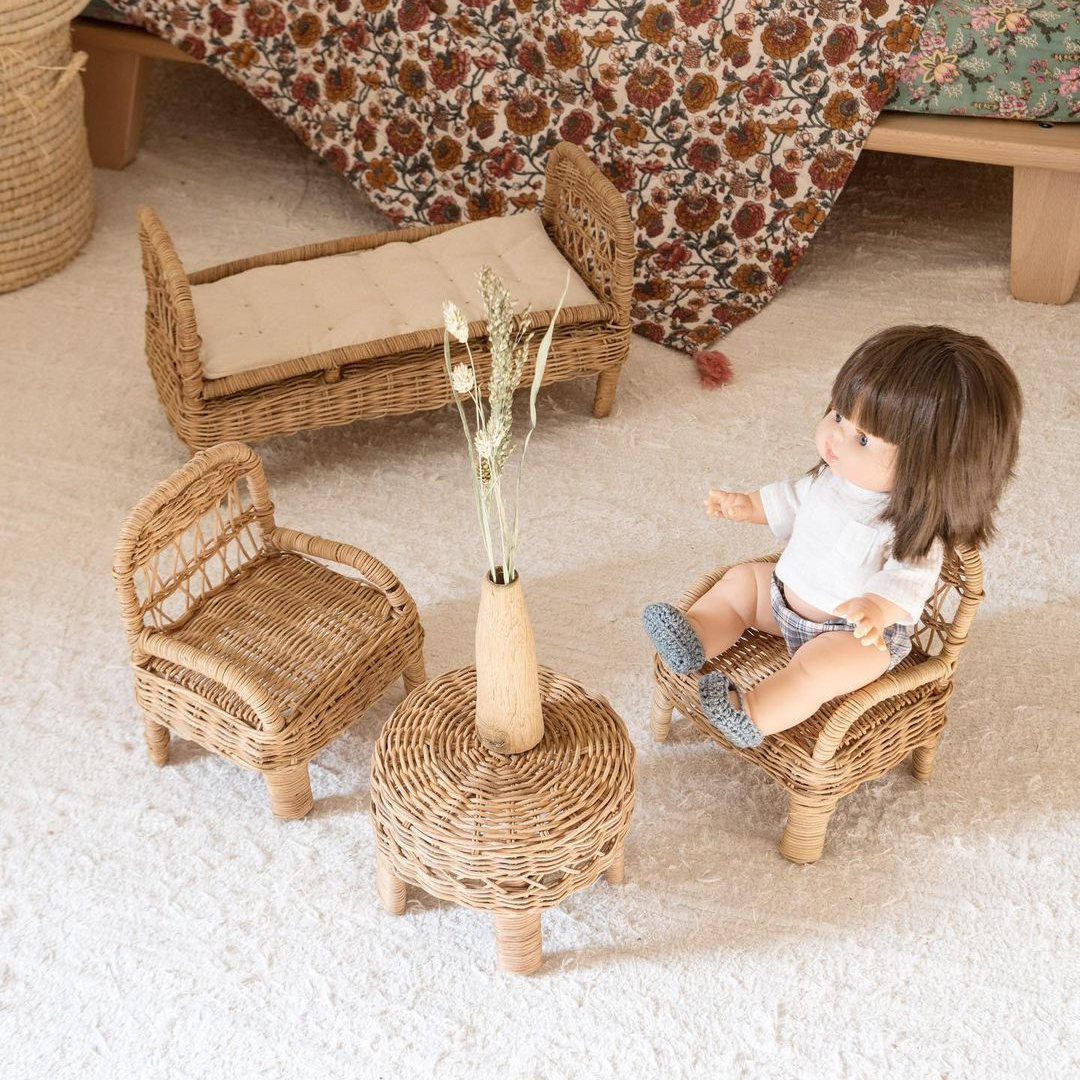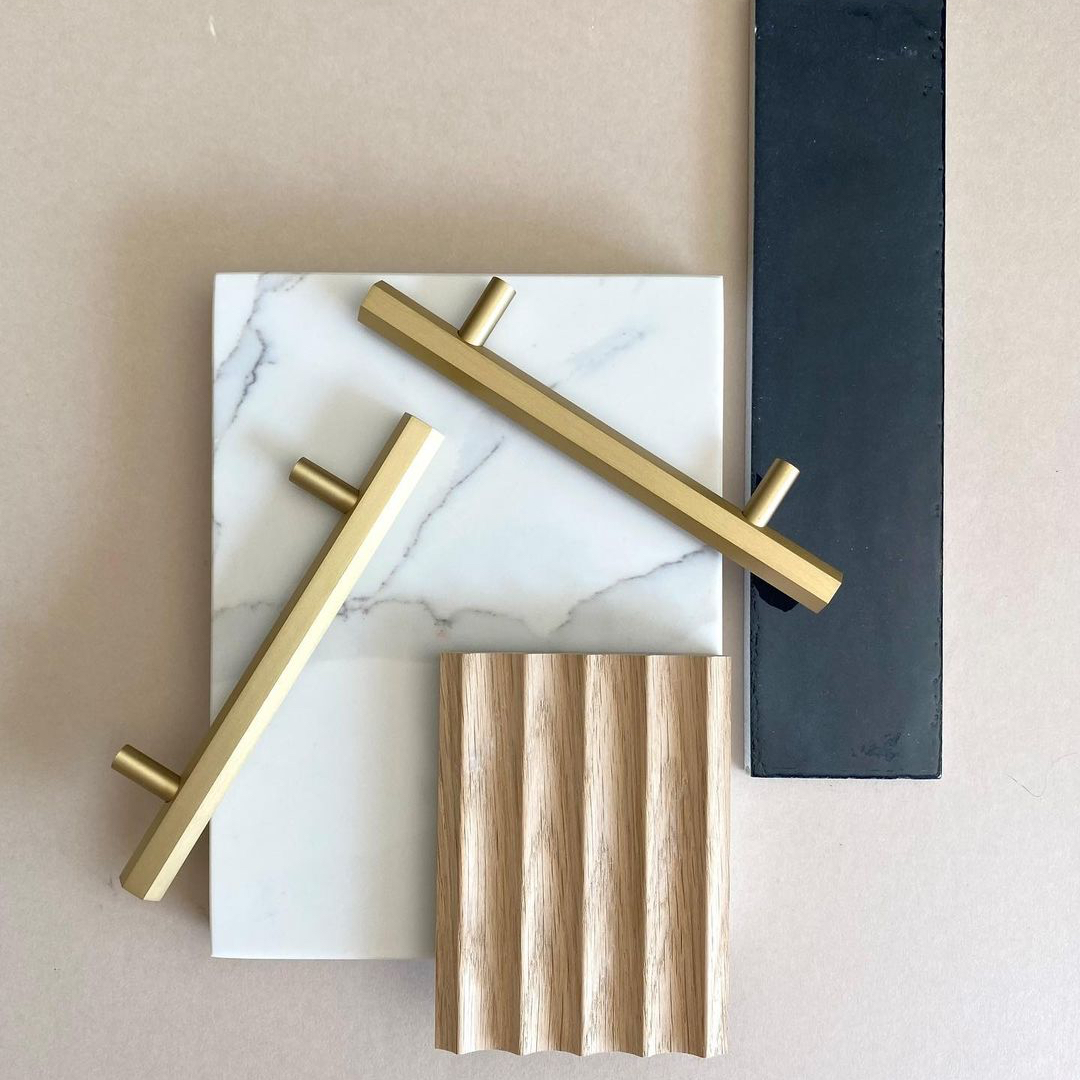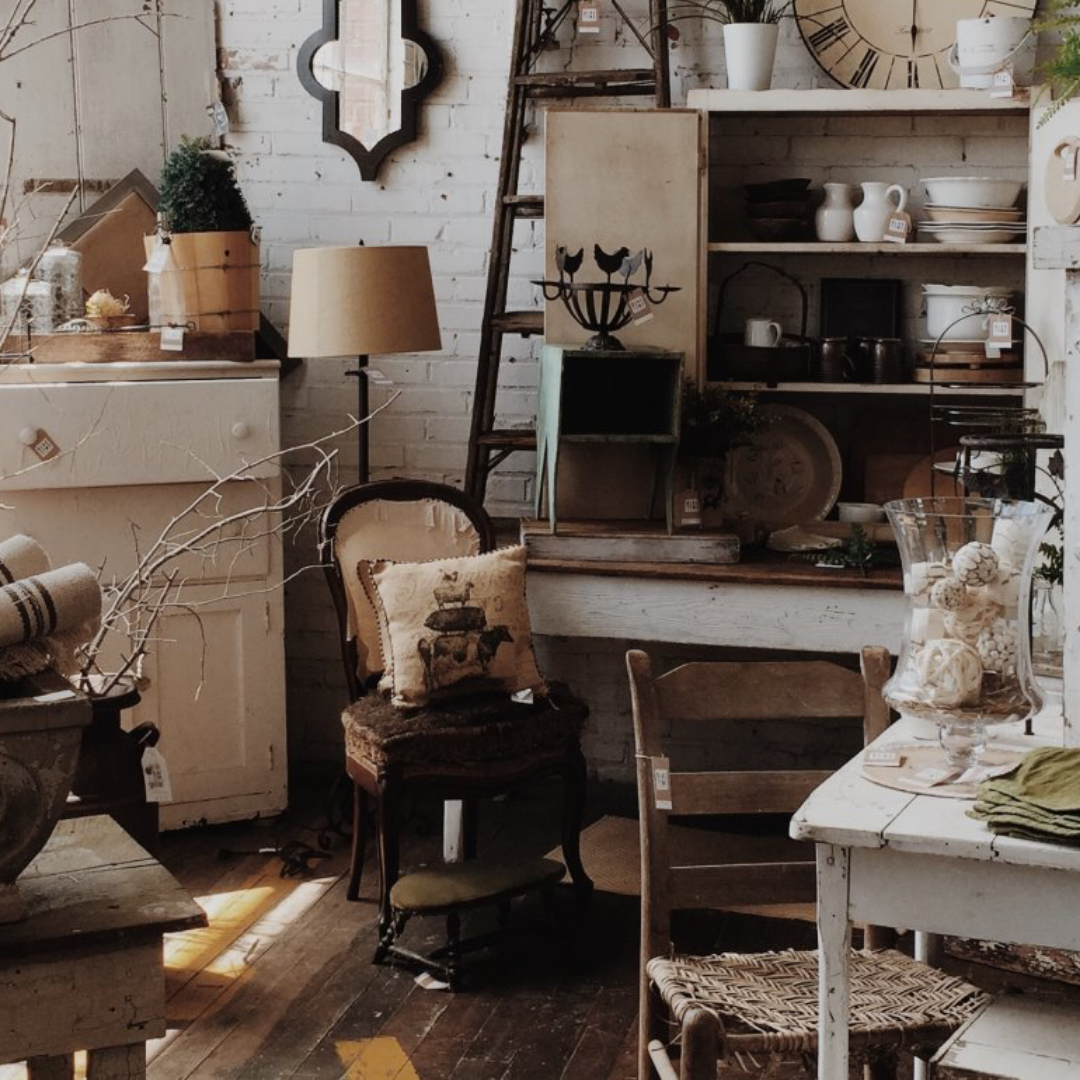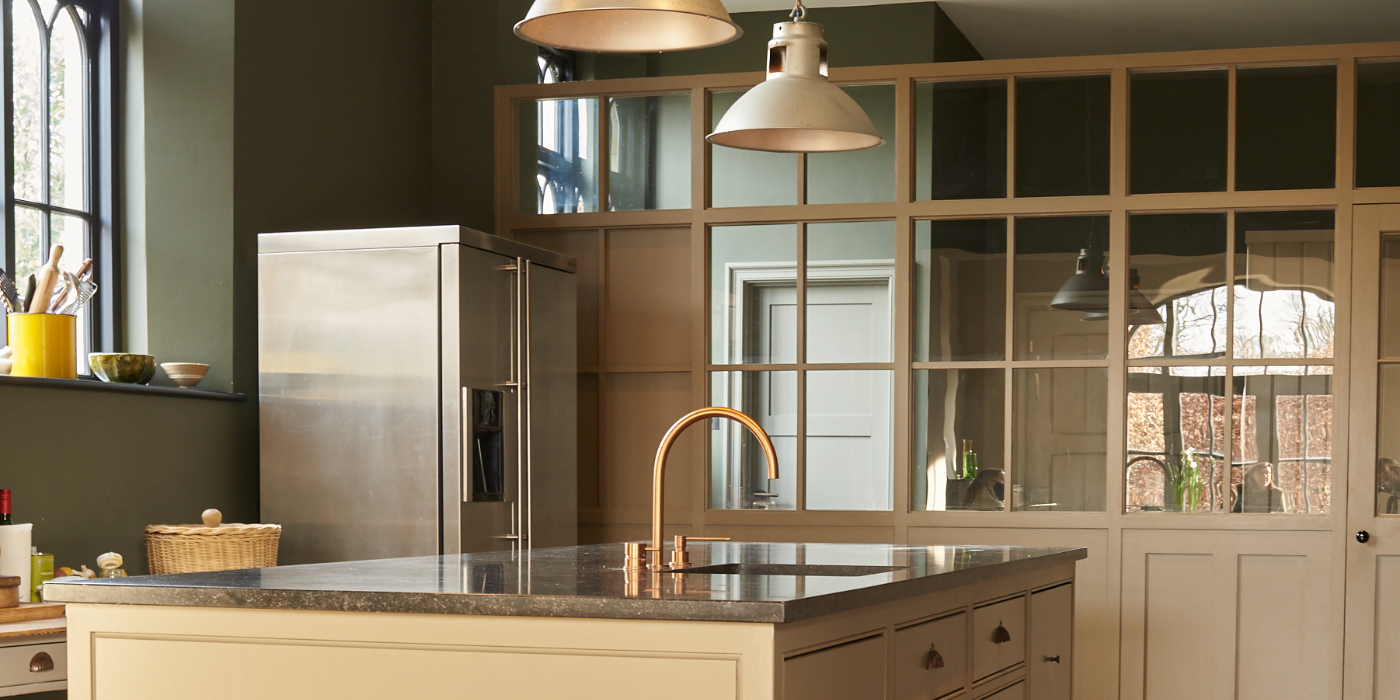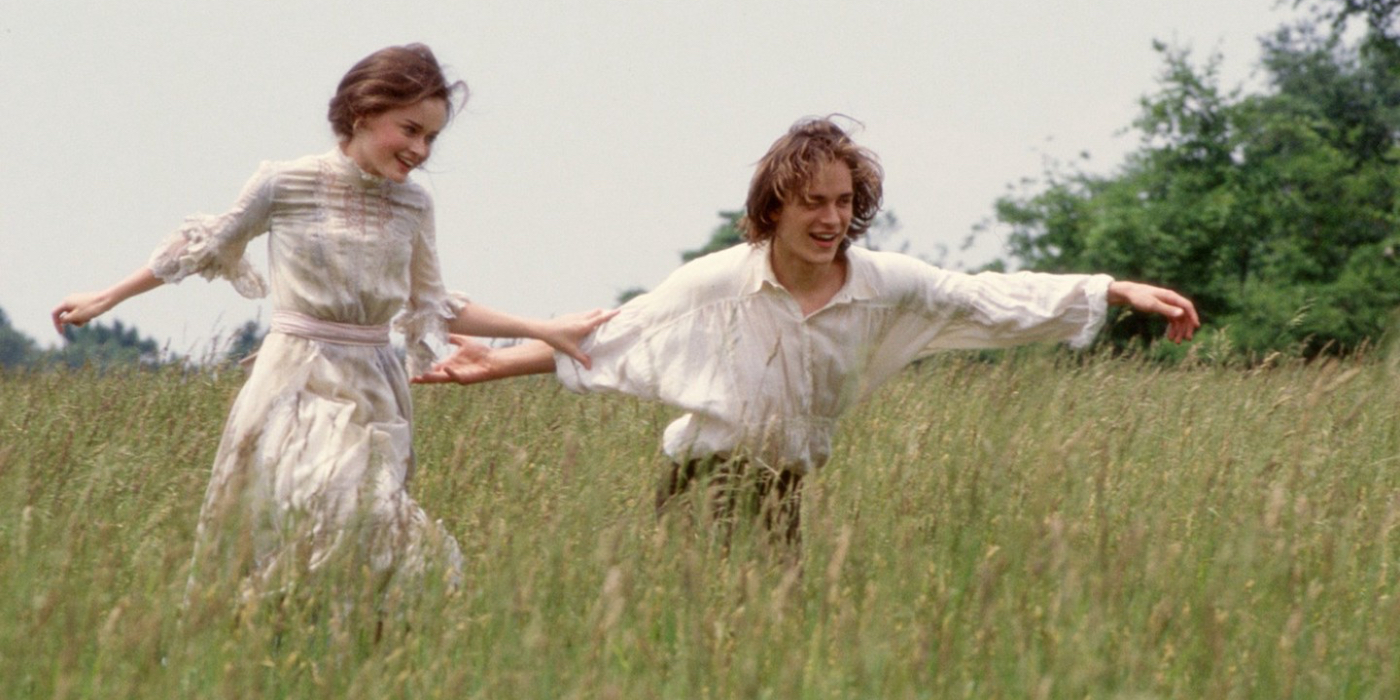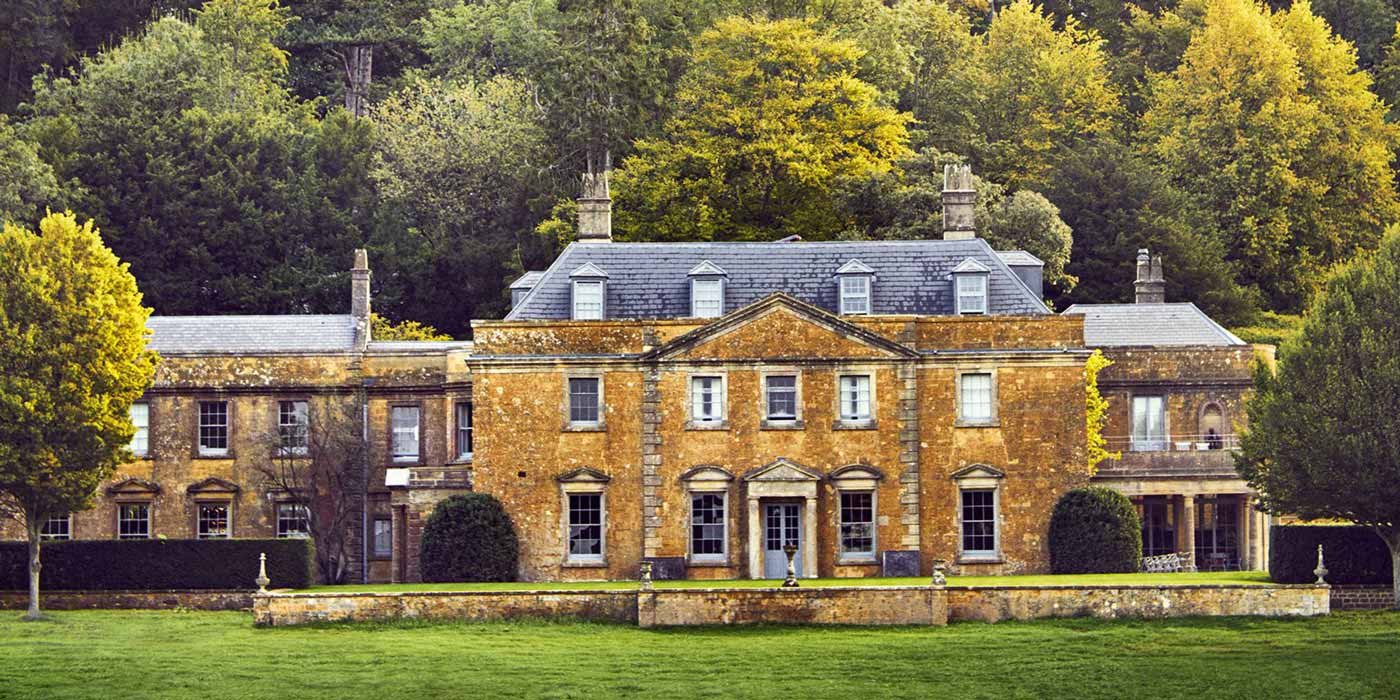Step Inside a Creative Director's Country Home in Somerset
With over three decades of experience as a creative director and designer for luxury brands and high street retailers, editor at large Alison Hill has a talent for translating trends into products for fashion and the home. It makes sense, then, that her fascination with the way the changing world around us affects our needs and desires would lead Alison to Somerset, where she would redefine what it means to live well.
Why did you choose to move to the country?
I‘ve been using the phrase ‘rurban’ probably over the last ten years to describe how the rural and the urban collide. I witnessed it first in the urban setting as I saw people seeking comfort in velvet sofas, and paint colours more commonly seen in fading country houses, installing wood-burning stoves when it would have far more convenient to flip a switch for heat, and unloading canvas bags of muddy vegetables on generous kitchen islands that wouldn’t be out of place in a country house of old.
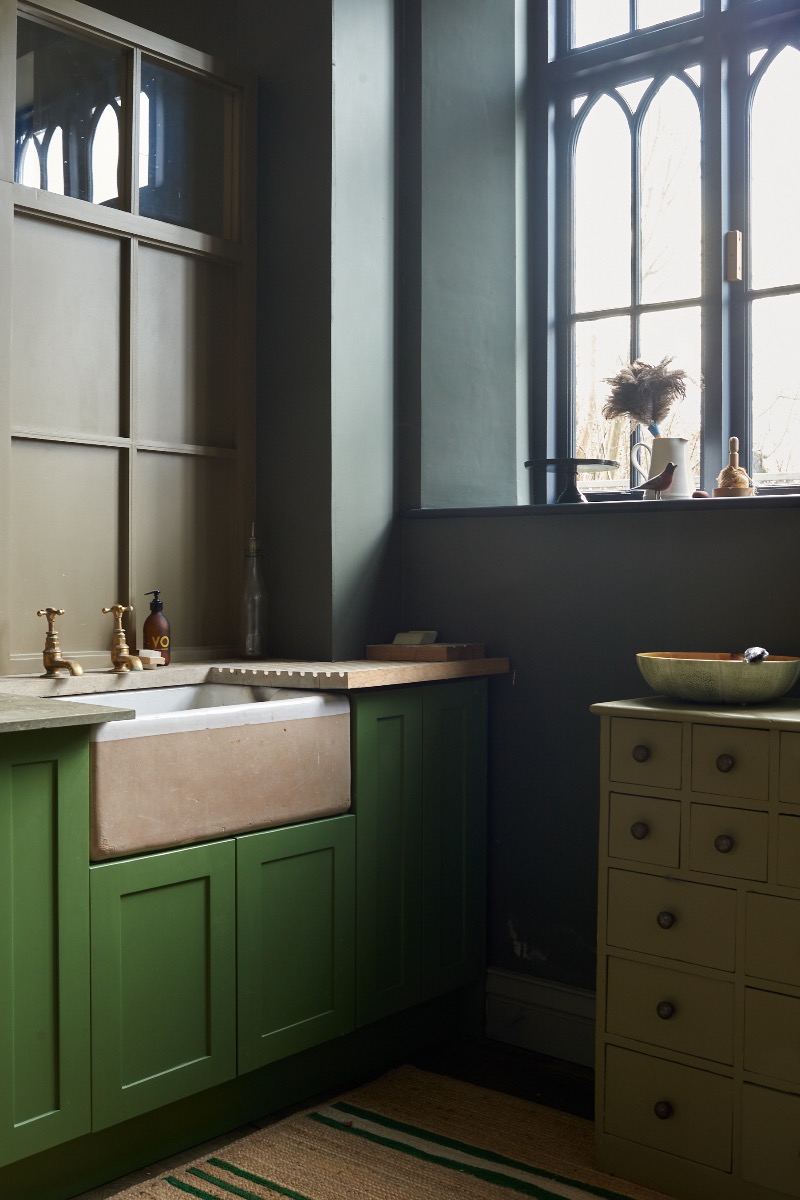
However, I was definitely cynical about the ‘rural idyll’ and my perception was one of a massive expedition for a pint of milk, and further still for the cinema or any other culture.
The first seed was sown when I started to travel regularly to Suffolk to work with a silk weaving company who were a very important supplier for the luxury brand I was working for. I discovered a county with stunning physical characteristics, but more significantly a distinctive food culture, and independent retailers with physical spaces and products to rival those I was regularly shopping in London.
My perception was completely altered, but in terms of actually moving to the country there was no epiphany, no overnight decision, but a slow burn began, and when it comes to my life in the country I feel that I have walked straight into the biggest trend that I have witnessed unfold in my career to date. I saw the country changing and felt that I could be fulfilled, and so the lure of fresh air, space and tranquillity turned my head.
What attracted you to Somerset?
Top of our list in terms of criteria was a beautiful landscape, solitude, and rather greedily all within a few minutes drive of good shops and places to eat. We headed West out of London, and we weekended county by county scoping out potential locations perfecting our wish list.
We discovered that we needed to be the sort of distance out of London that most people would not want to commute from to have the sort of landscape and density of population that we were looking for and having read and written about the best artisan bakers, the best kitchen gardens, cafes and restaurants it was Wiltshire and Somerset that became our firm target.
Tell us about your house
When it comes to buying a house in the country it’s a numbers game. There are just a lot fewer houses. If your criteria is strict – no road, no neighbours – you won’t be lining up days worth of viewings. You will do a 200 mile round trip on repeat until you get lucky.
We weren’t looking for roses around the door and beamed ceilings – location was uppermost in our mind, as you can change a building but you can’t change a location.
After several of those long round trips, and having literally arrived home from one, the agent called to tell me about a house she described as “slightly unusual.” A house that had once been home to an order of nuns, although not originally built as a Priory. A mellow stone house built in the 1700s in a very large garden in our target location.
What was particularly appealing was how very simple it was, with few decorative features, and the perfect backdrop to reimagine. Miraculously unlisted, which was an incredible bonus, because although we didn’t see ourselves making major changes, if your building is listed you must seek permission from English Heritage for any alteration.
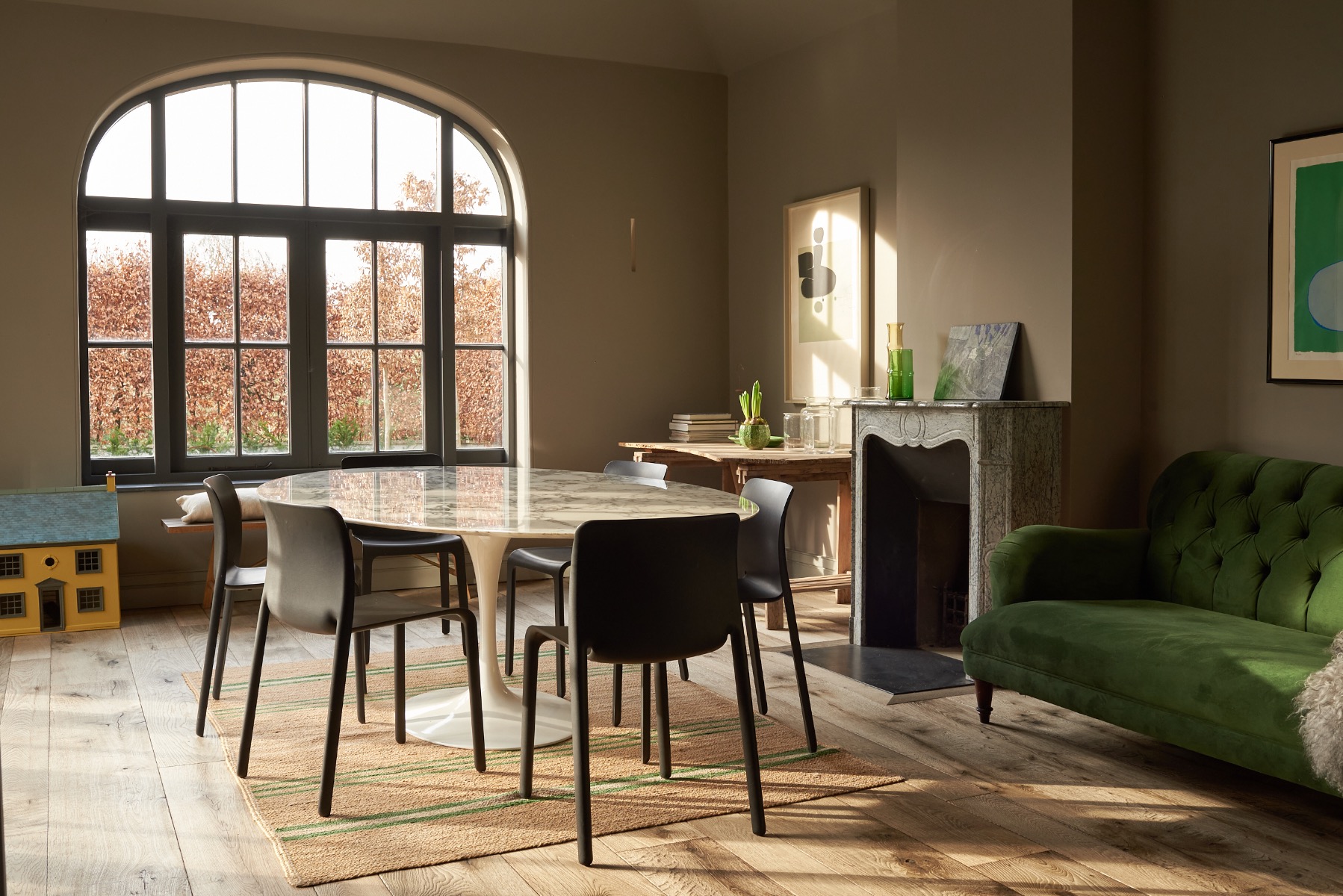
Originally we didn’t envisage making major changes. We instinctively felt the house had good bones, so we reconfigured rooms as there were lots of tiny bedrooms to suit the previous inhabitants and an enormous refectory style room that we subdivided with a glass panelled screen to retain the feeling of space to use as our kitchen.
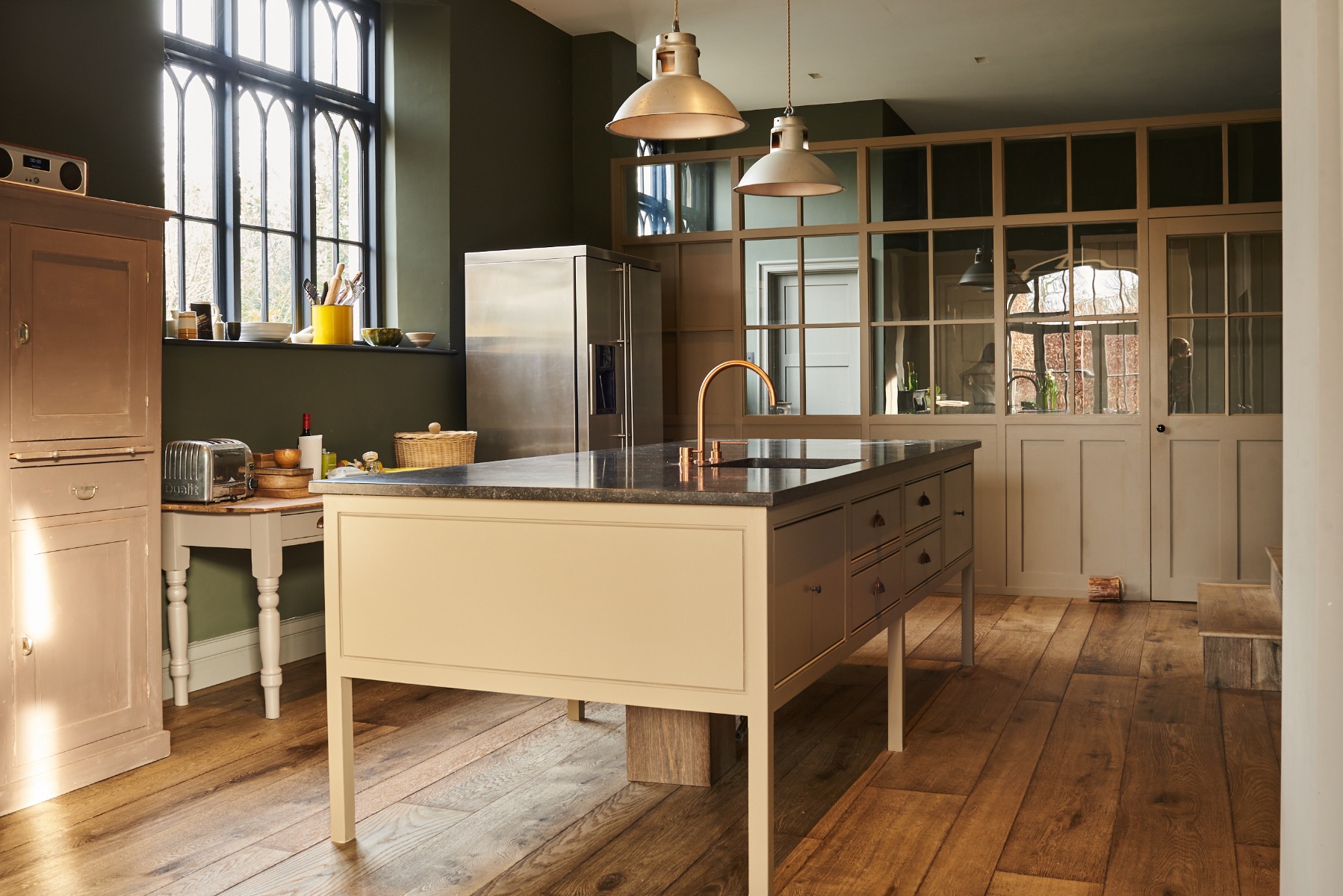
The mellow stone facade is untouched, but the interior has been subject to new floors from Solid Floors a company that we rely on for their finishes and craftsmanship. We have used their band sawn oak and herringbone patterns, they have formed staircases for us and blended the old with the new.
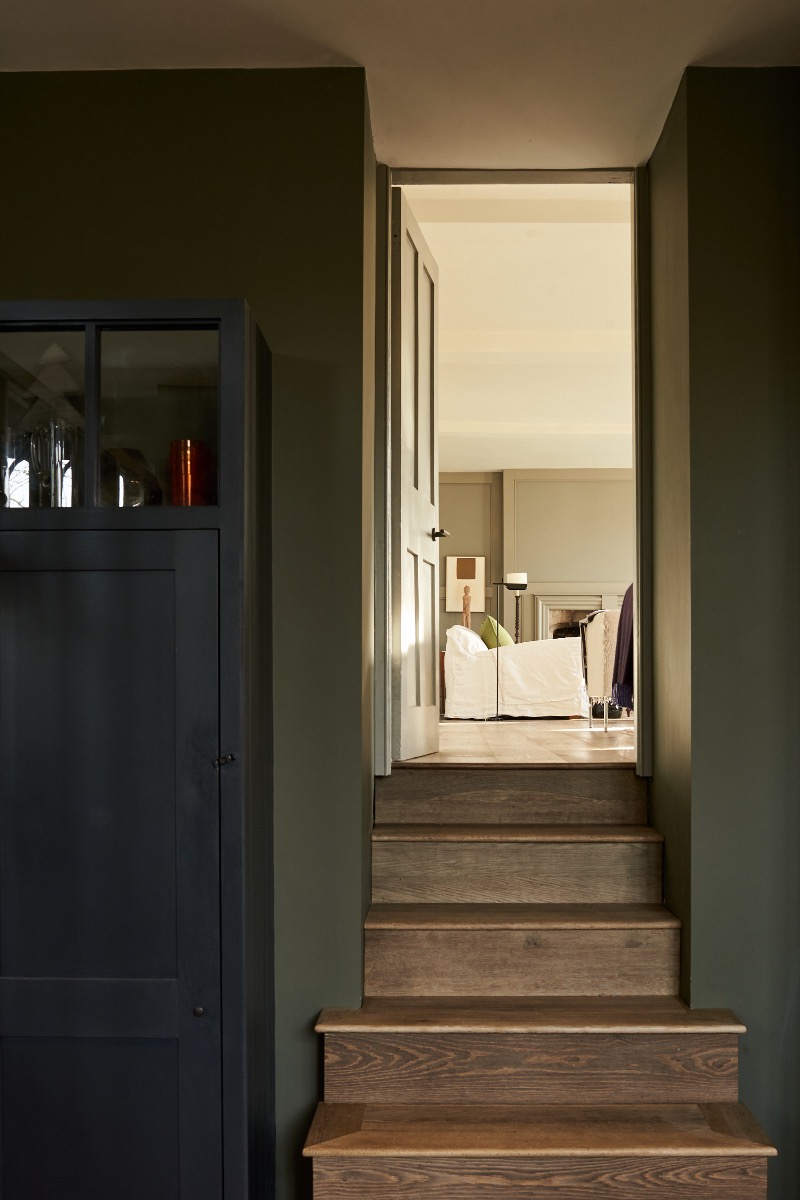
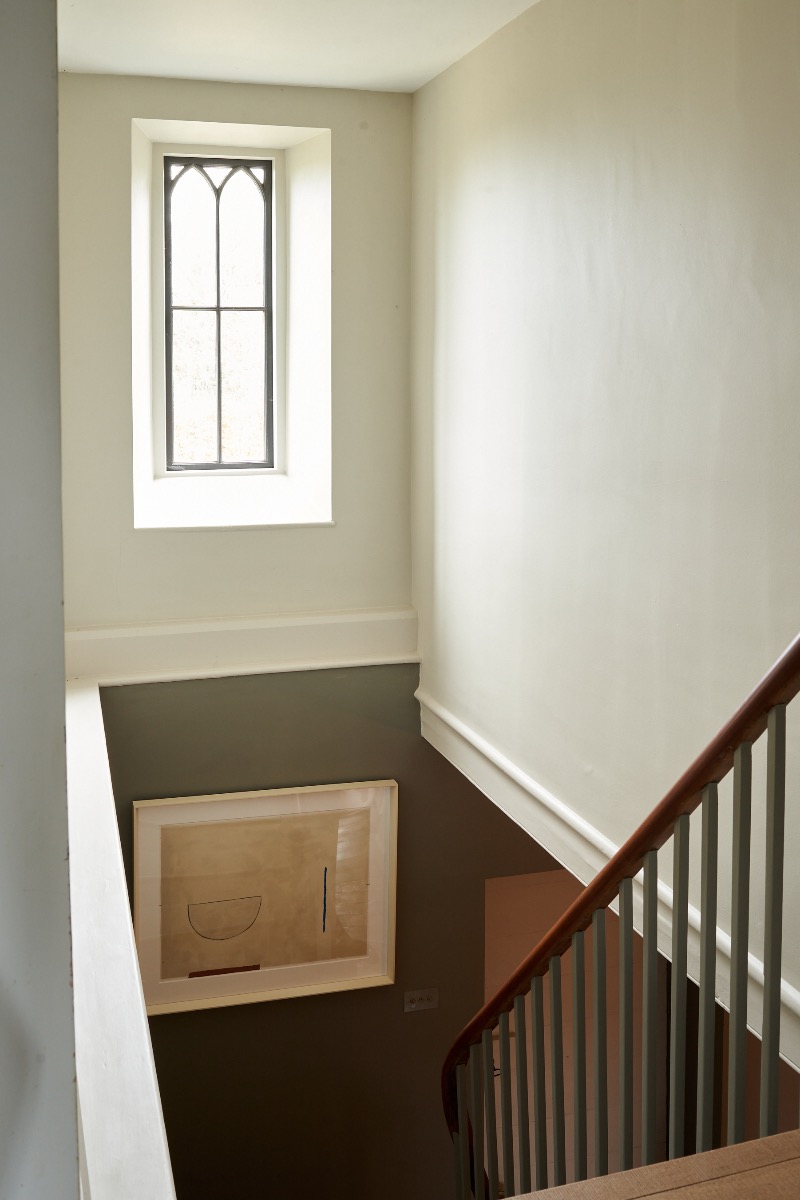
Where bare brick existed we have panelled and incorporated invisible cupboards so that technology and general ‘stuff’ is hidden from view.
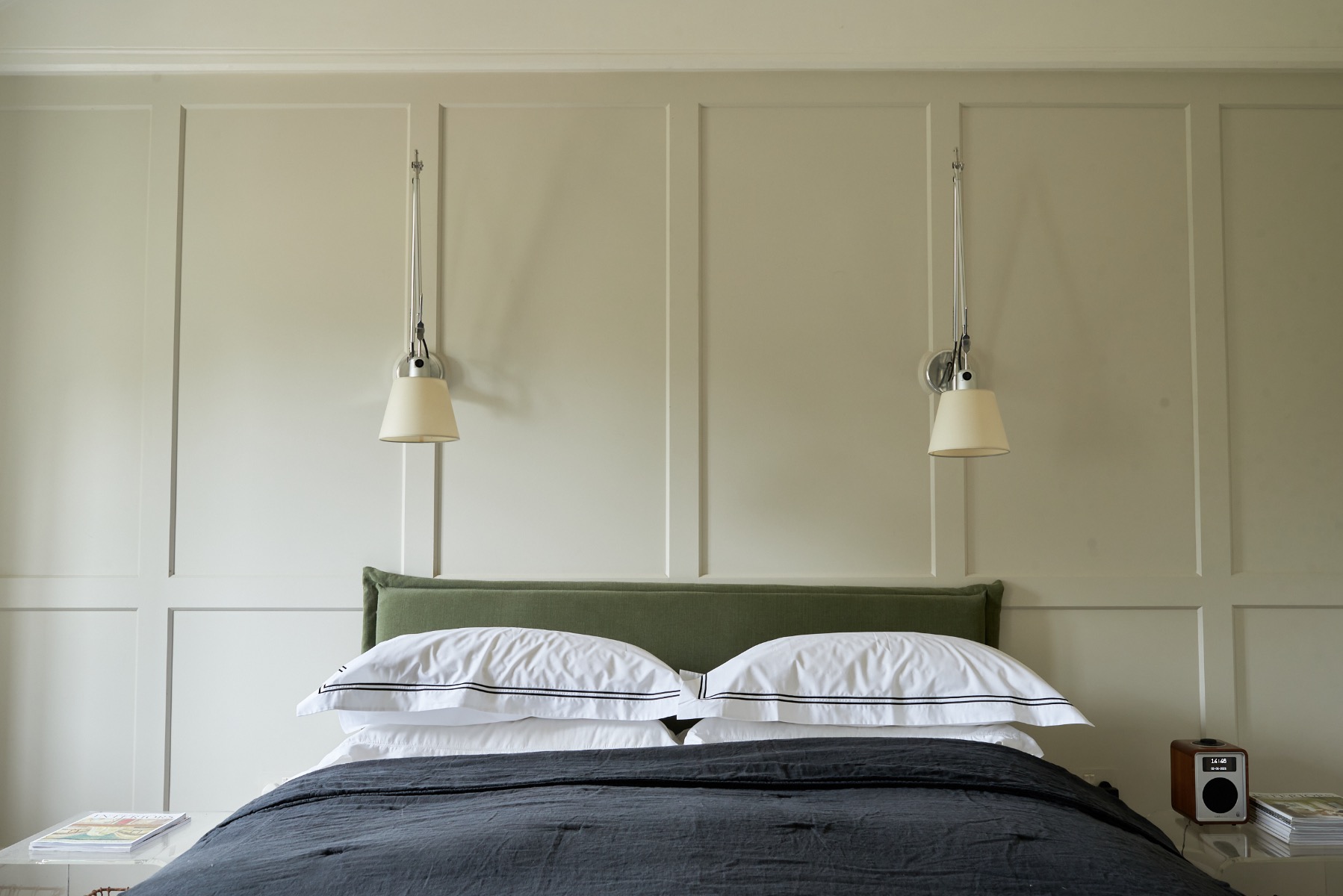
Colour is a device that I value highly, I have never subscribed to the view that light colours produce more light, if a room is naturally dark it’s an opportunity to enjoy its atmosphere.
Rooms in the front are light in the morning and soon lose the sun, and so the panelled study and front bedrooms are painted in a dark mole grey, white woodwork is banished and we used an almost black tone called mullet for all our interior woodwork because it enhances the fine glazing bars on the windows.
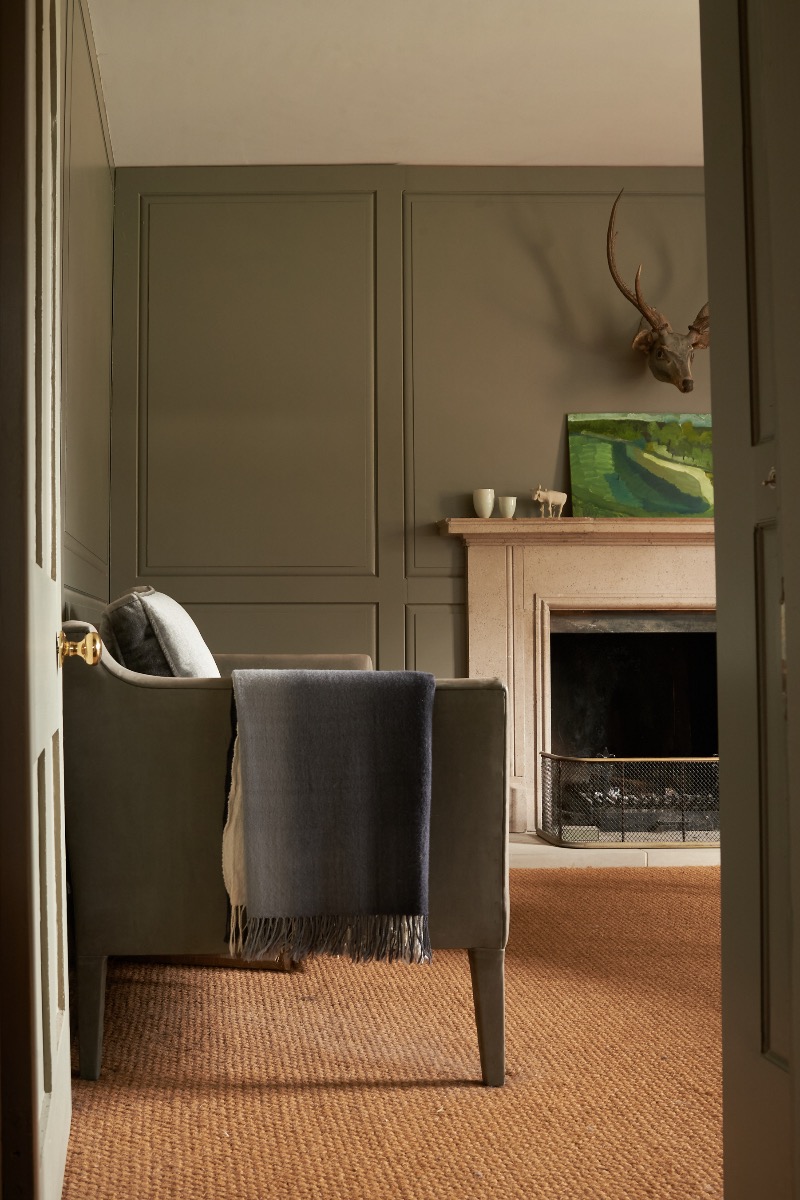
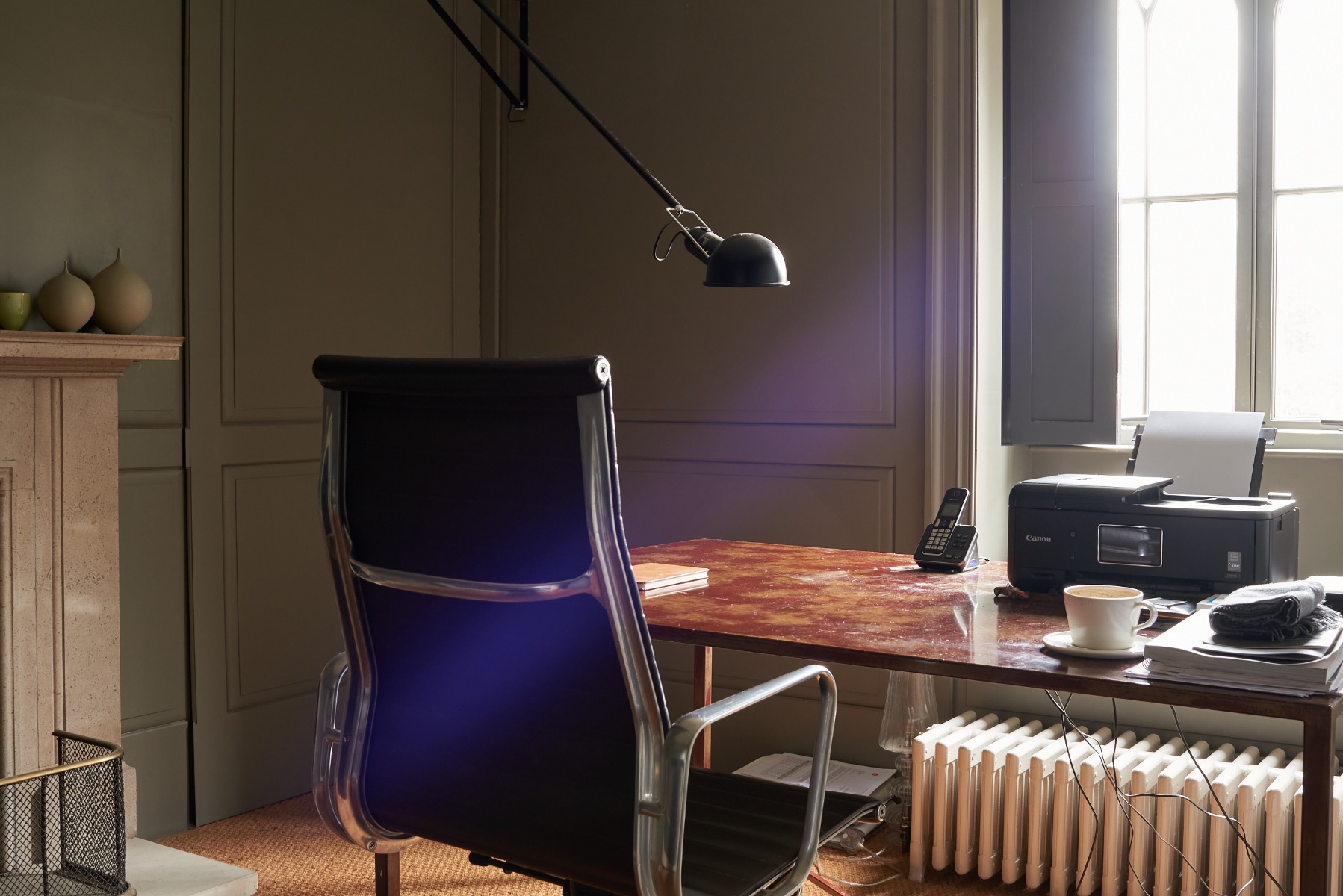
I have found myself drawn to tones that seem to reflect the place we inhabit, earthy, strong yellows and greens and colours from stormy skies, and I think this is what makes the house grounded in its place, and why iconic pieces like the Saarinen don’t look at odds.
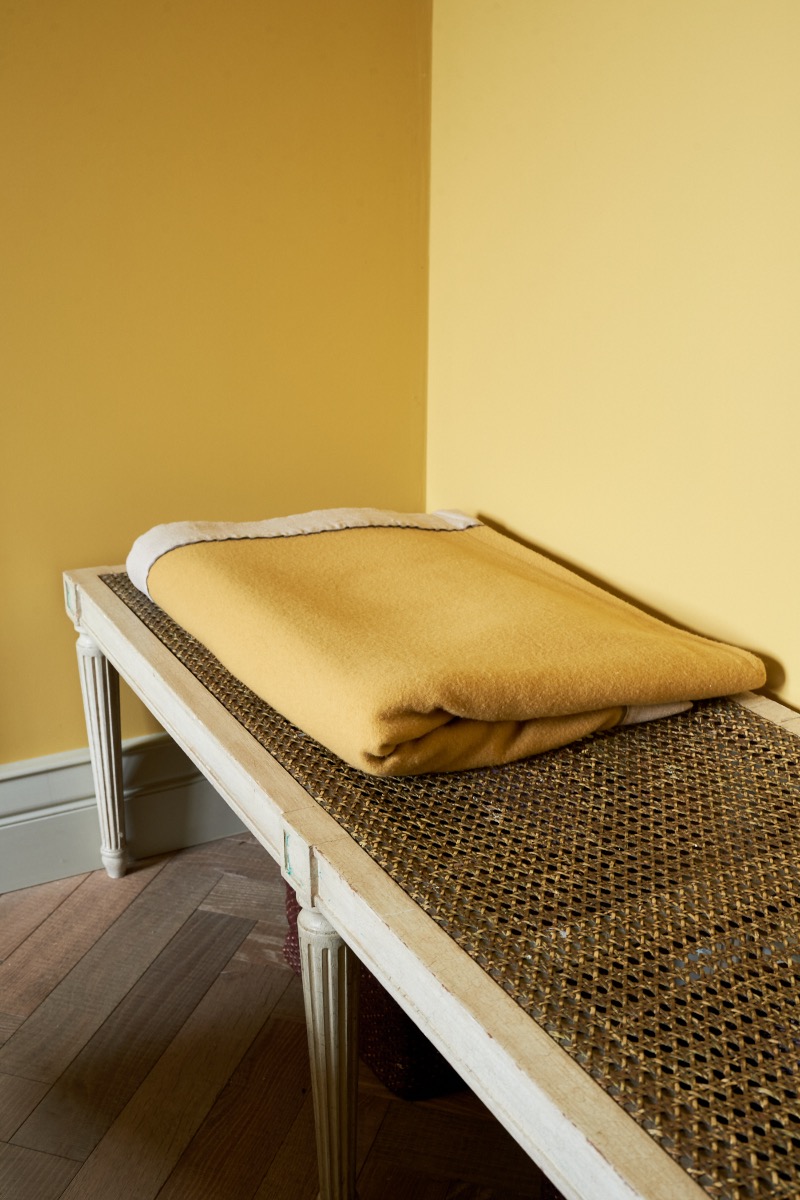
The back of the house is a single room the length of the house with a gallery feel to it. There are no doors onto this principal room, which we think is because the house was used in a municipal way, and so when you open the front door you can see the garden beyond from the entrance hall, and we love this aspect.
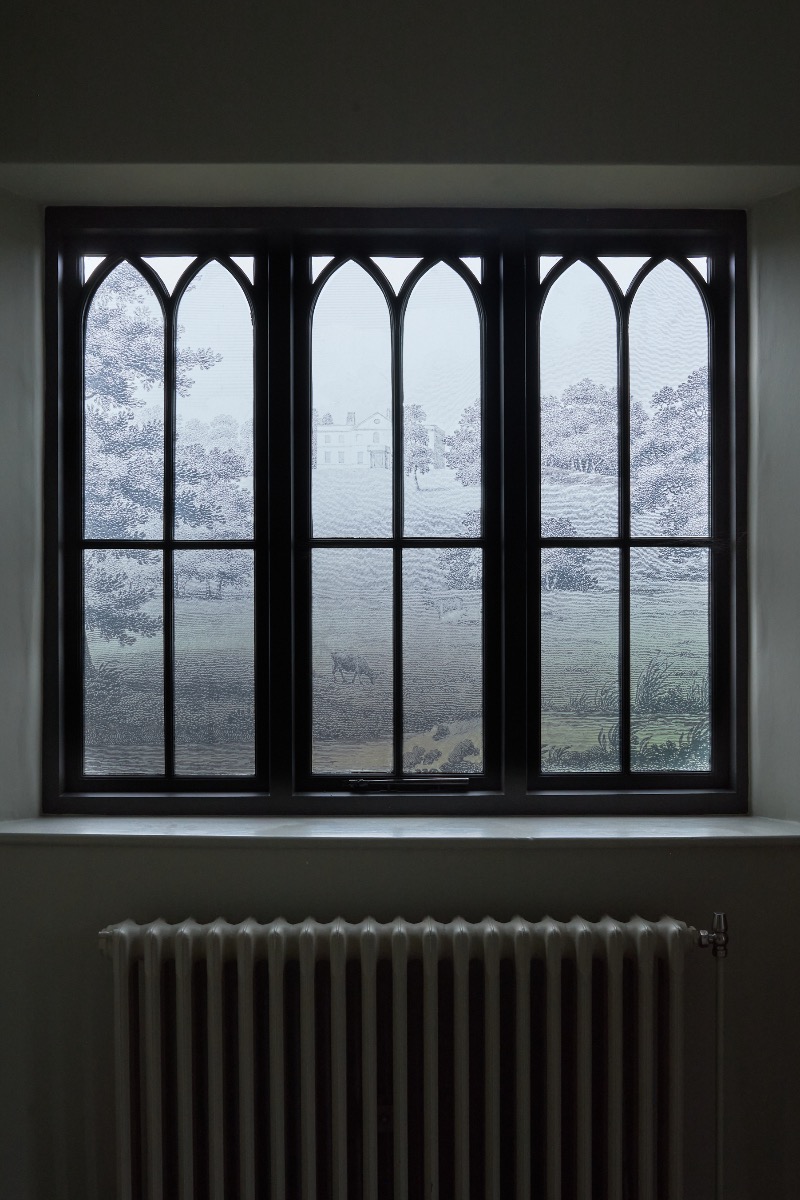
We have created two living rooms left undivided which we can work from if we don’t want to be hidden away in the study, and that we can retreat to the other end for pure relaxation, it’s the room we spend the most time in and the one you pass through to reach other parts of the house and is our favourite space for lots of reasons.
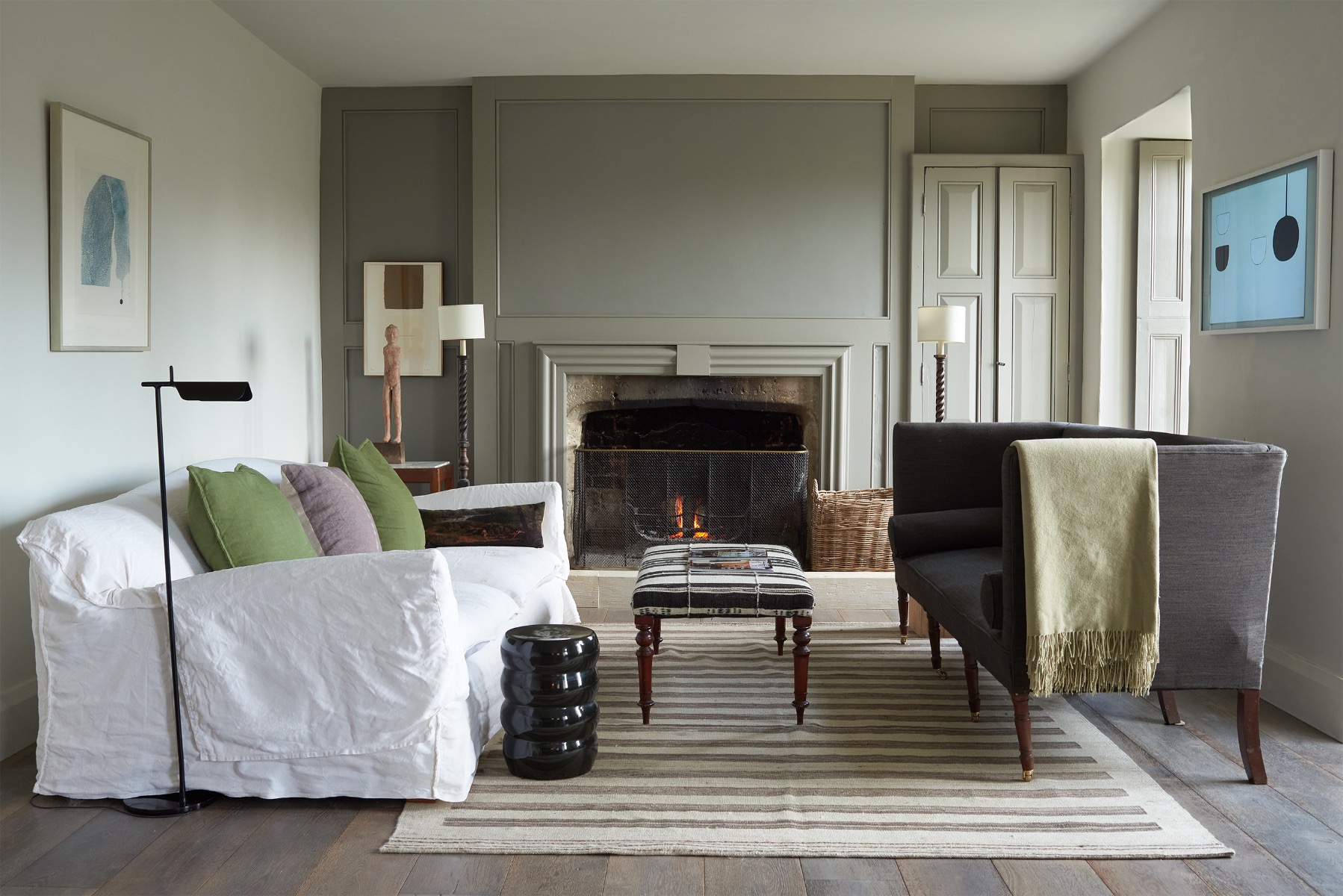
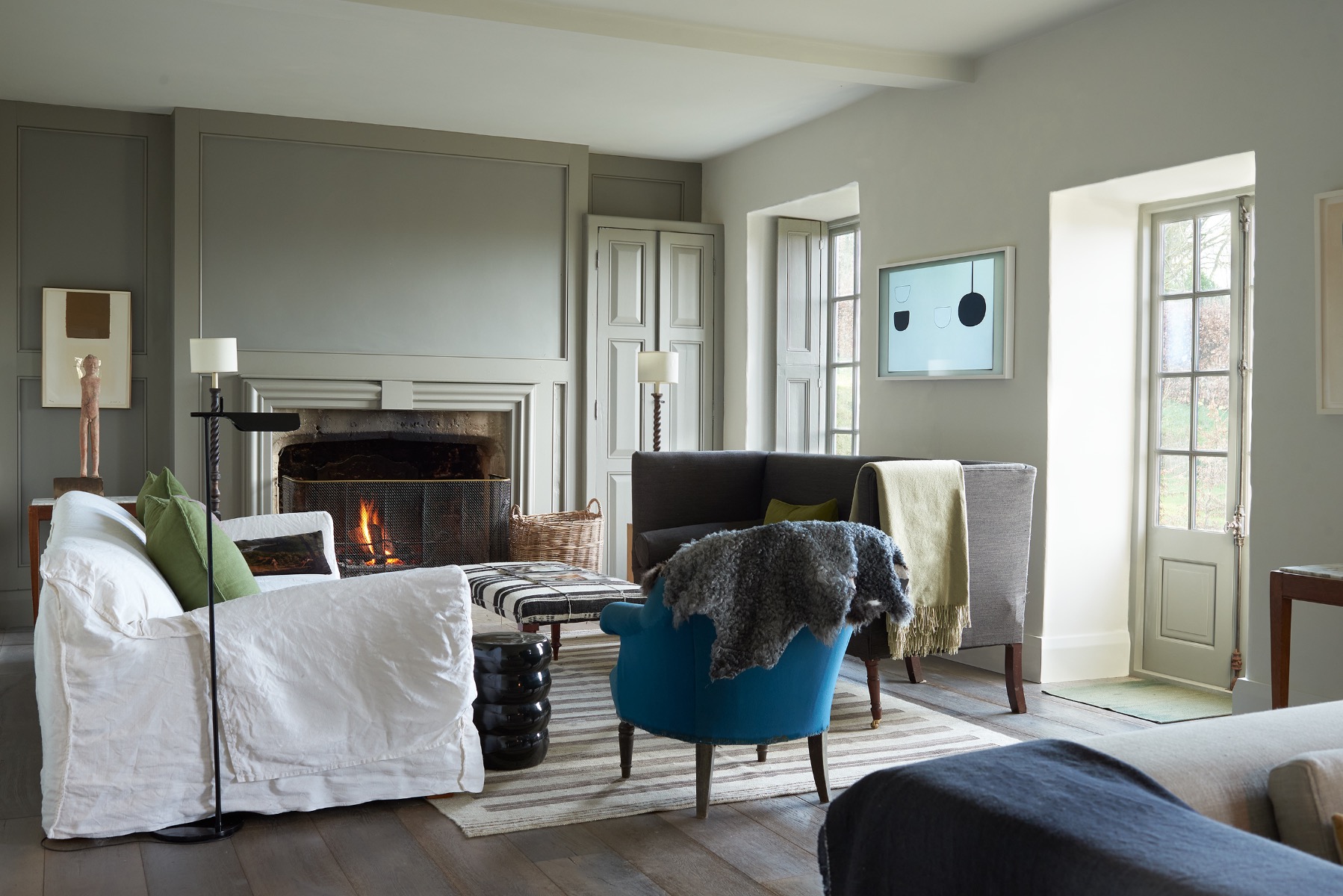
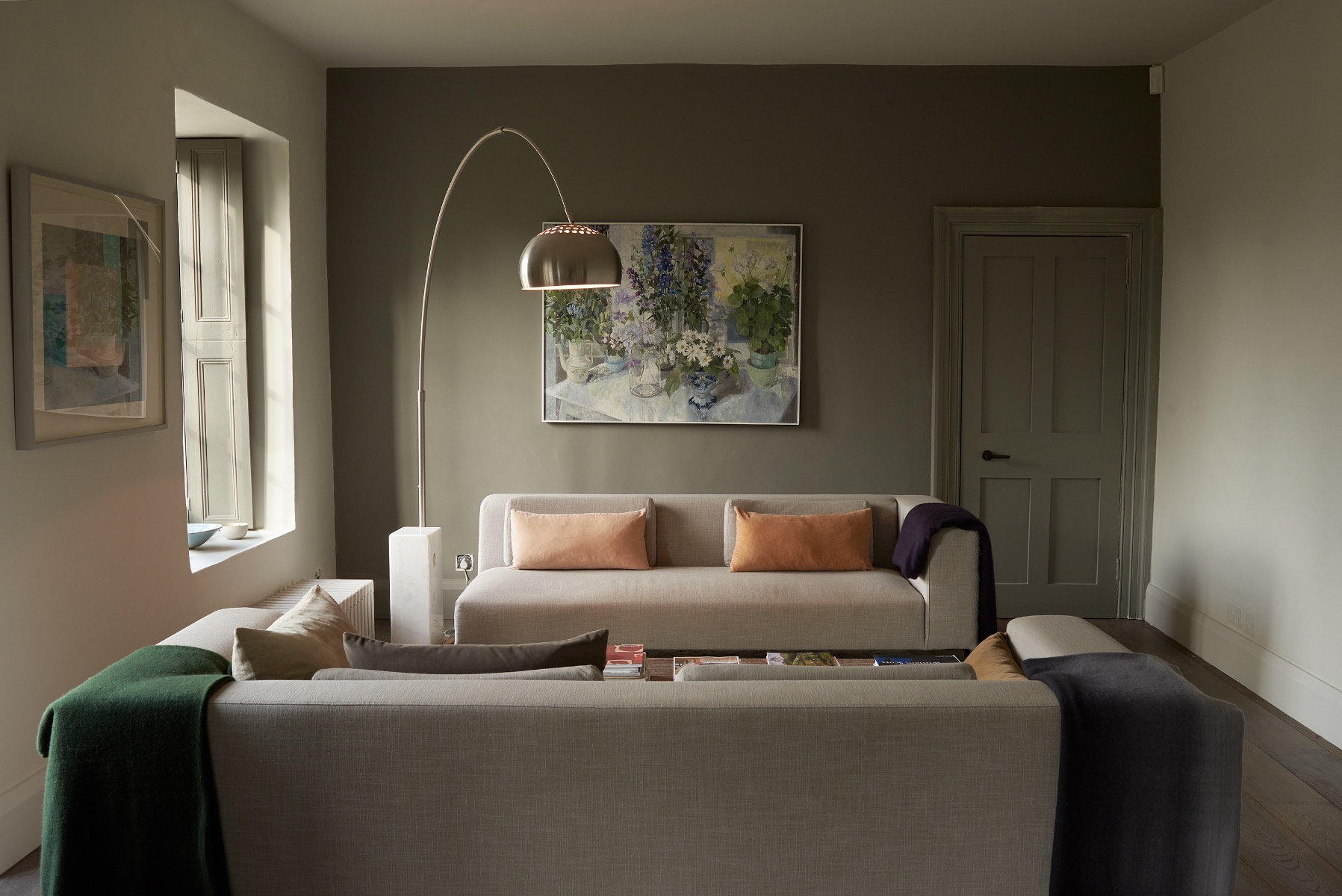
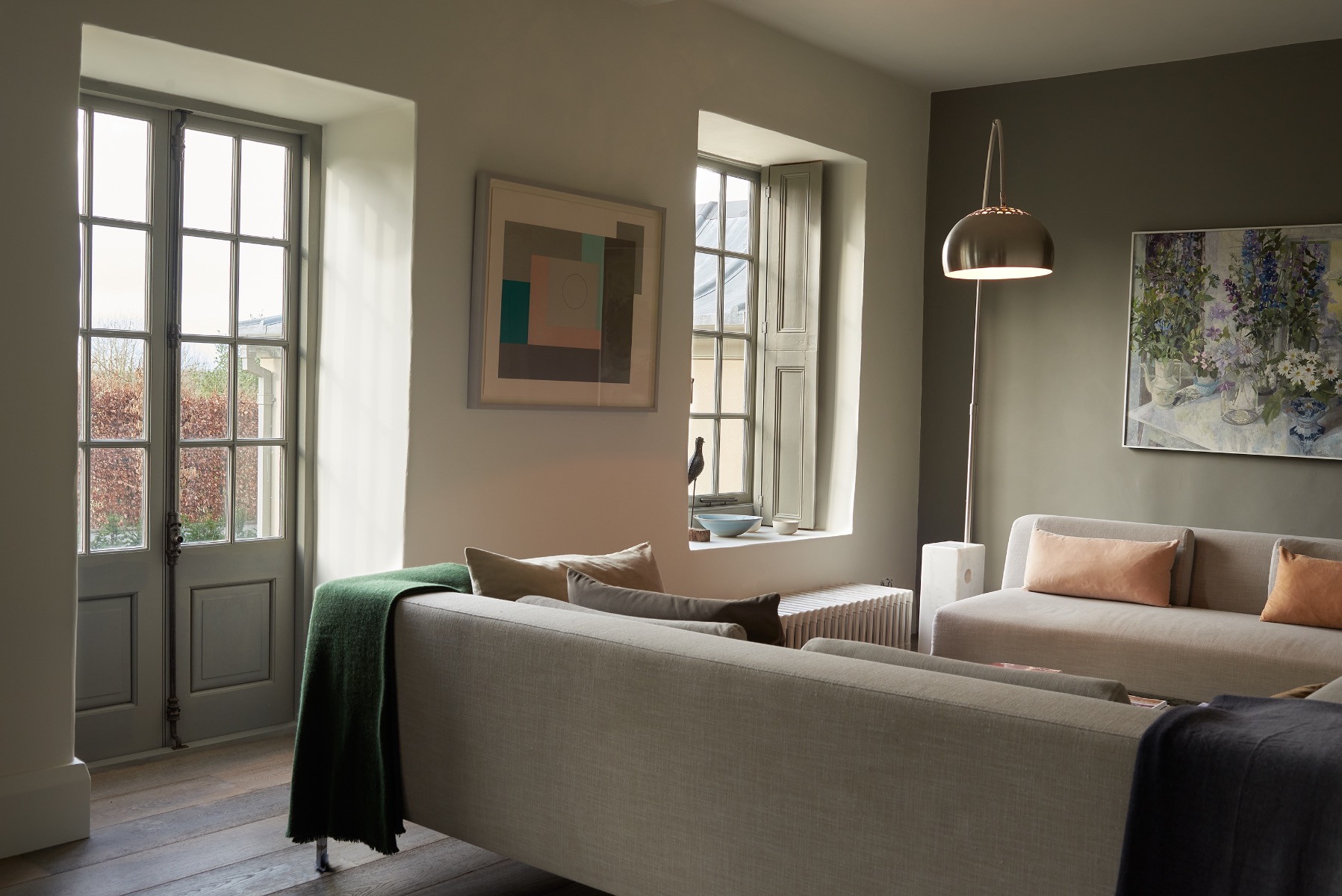
I have always favoured treating bathrooms as first and foremost rooms, that also happen to fulfil their purpose, so the main bathroom is panelled in wood until it meets a water-resistant stone surface of the same colour in the shower that gives the impression of a continuous wall, rather than a shower cubicle.
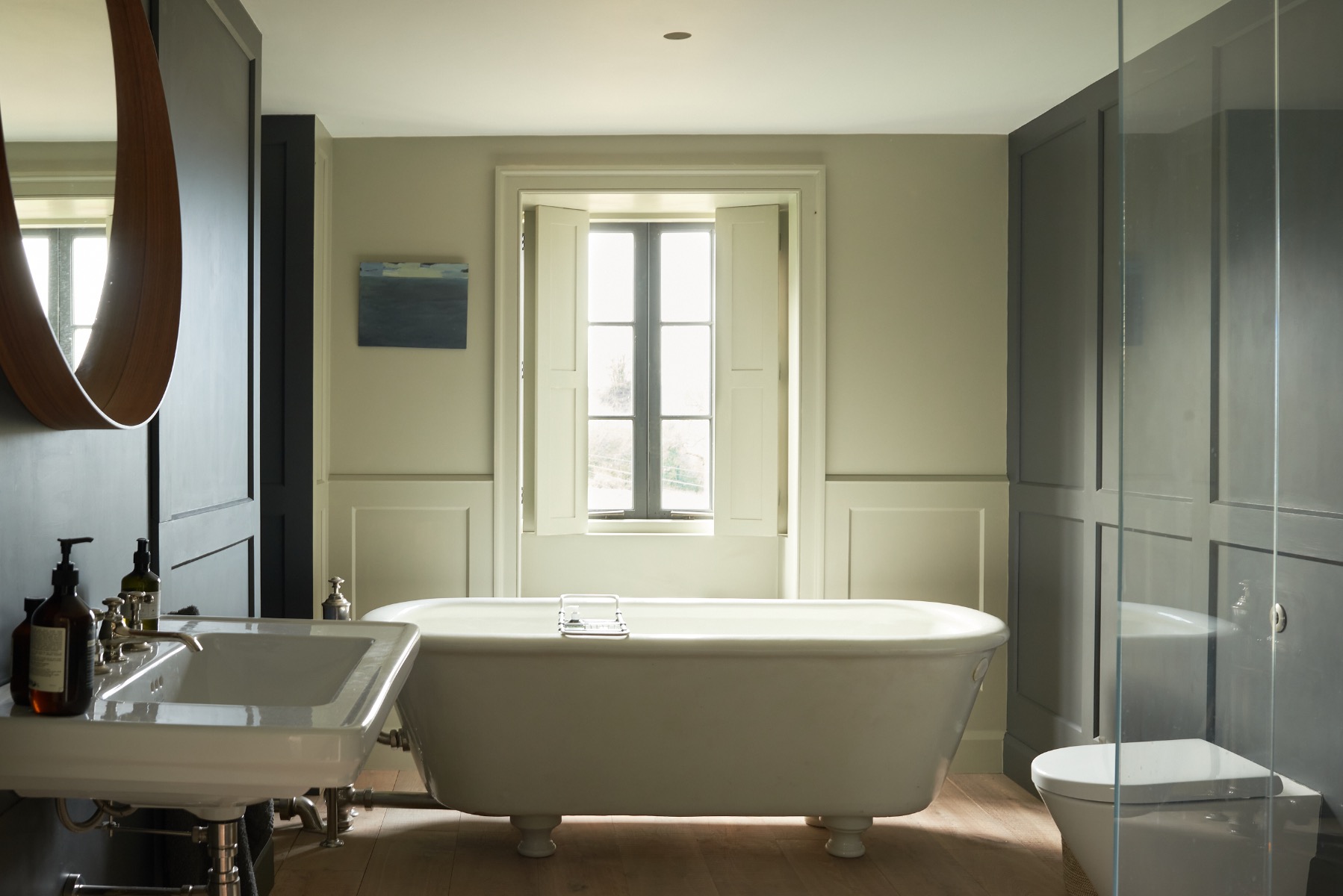
I am addicted to freestanding baths, and we found a beautiful antique ceramic bath, hand made in the potteries being removed from a hotel whose guests favoured showers. It was simple to acquire, but what followed was something of an epic due to the sheer weight.
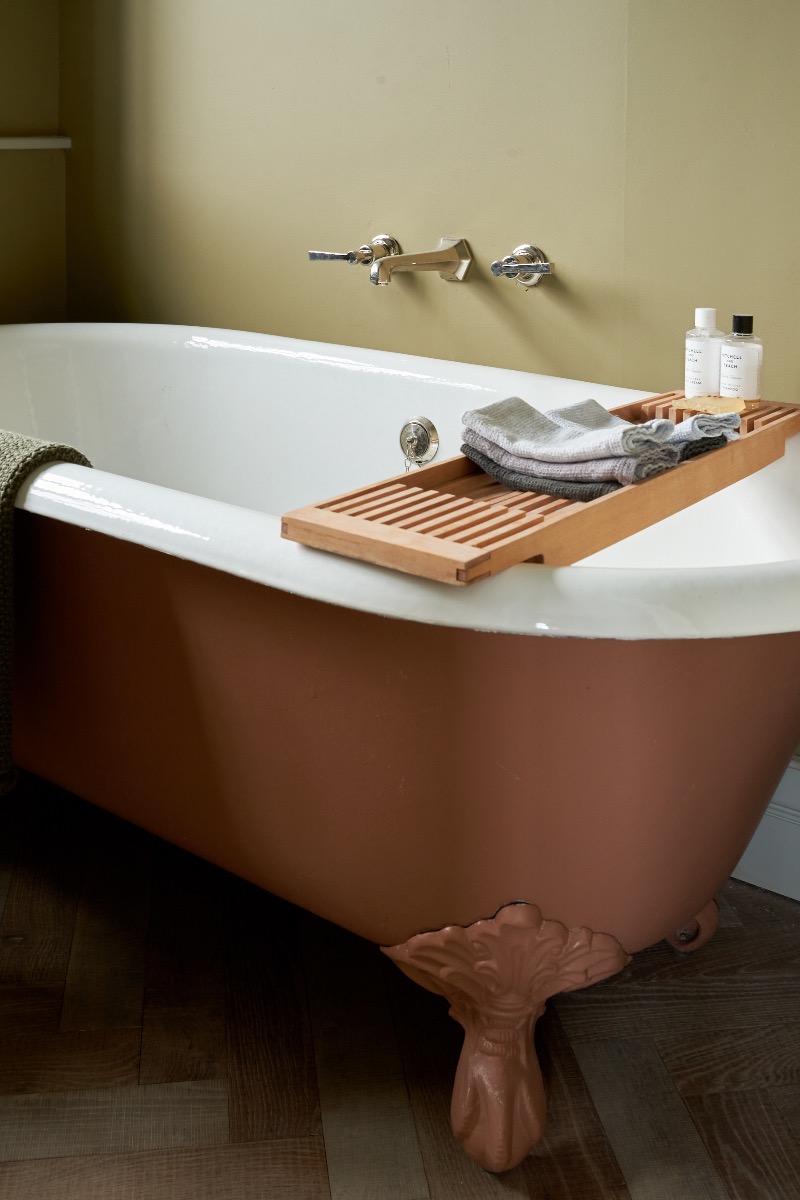
Stage one, removal from the hotel and delivery to us, not too tricky, just four people to lift! Stage two, getting it upstairs, reinforcing the floor and finding a specialist to refurbish the complicated but fantastic arrangement of taps slightly more tricky.
It has been a bit of a joke in our house that we always have a bath in the hall, because the one we took out sat there for six months, then the one we bought sat there for nine, and then we repeated that for the next bathroom.
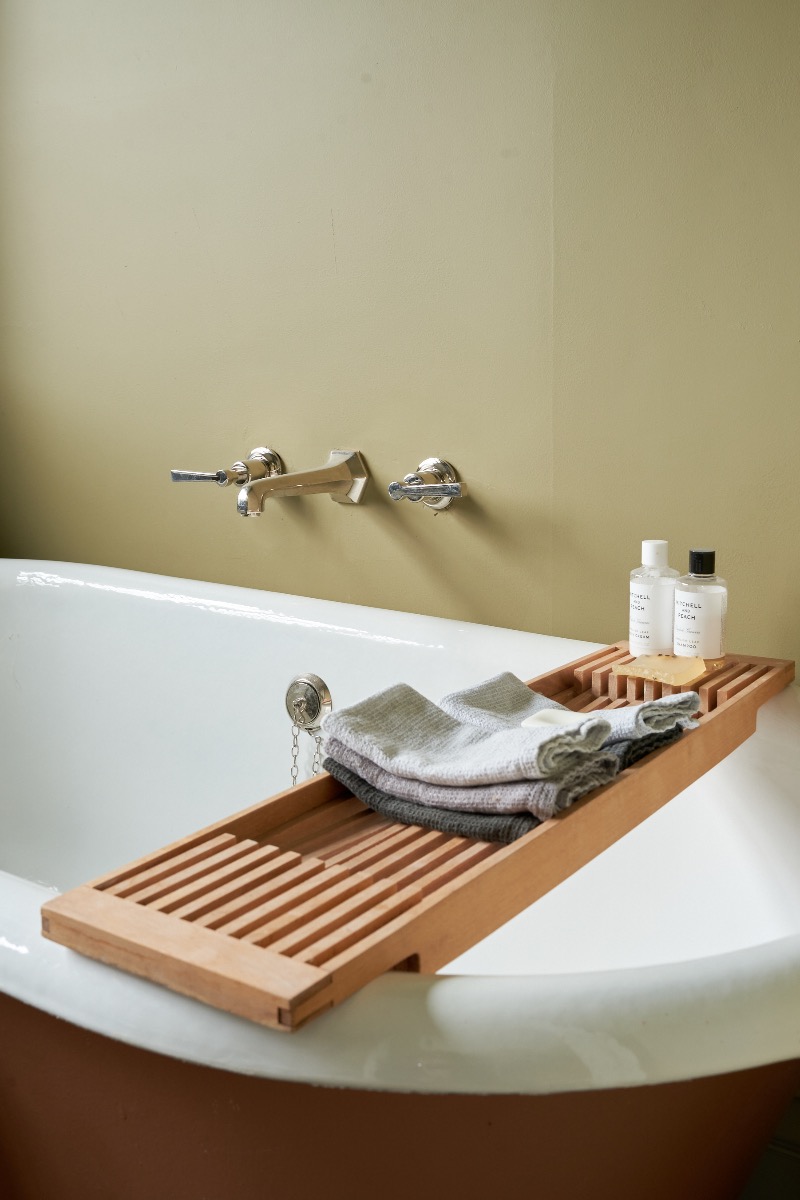
From a style perspective, I don’t feel hostage to an era, to decorate and furnish according to the age of the building, or its setting. I love the idea of allowing the old and original to remain, providing it is worthy, and enjoying modernity.
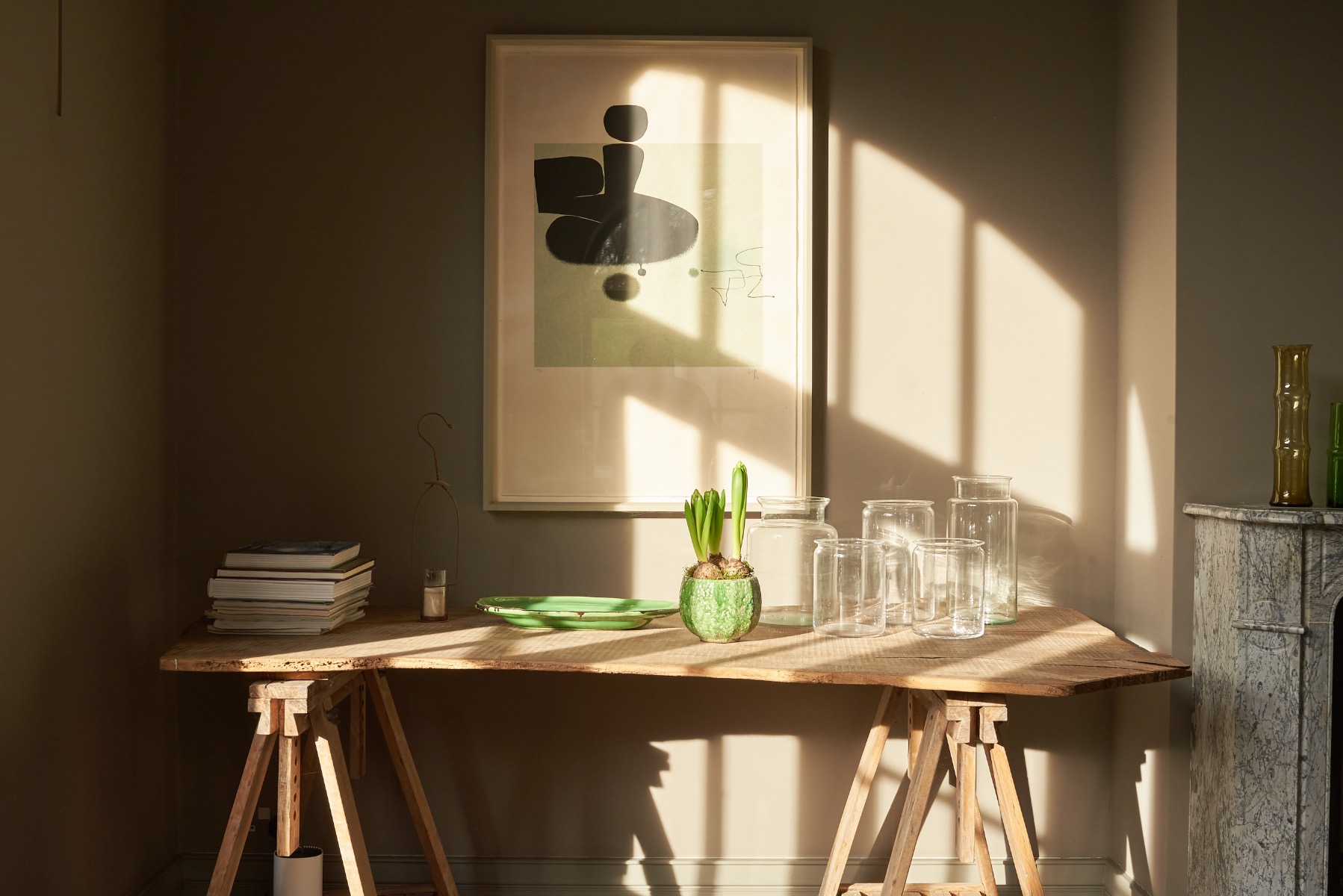
This philosophy will serve you well if you are moving from an urban to a rural environment so that you don’t have to undertake wholesale change, but can gently and gradually alter your belongings, colours and materials to ground you in your new environment.
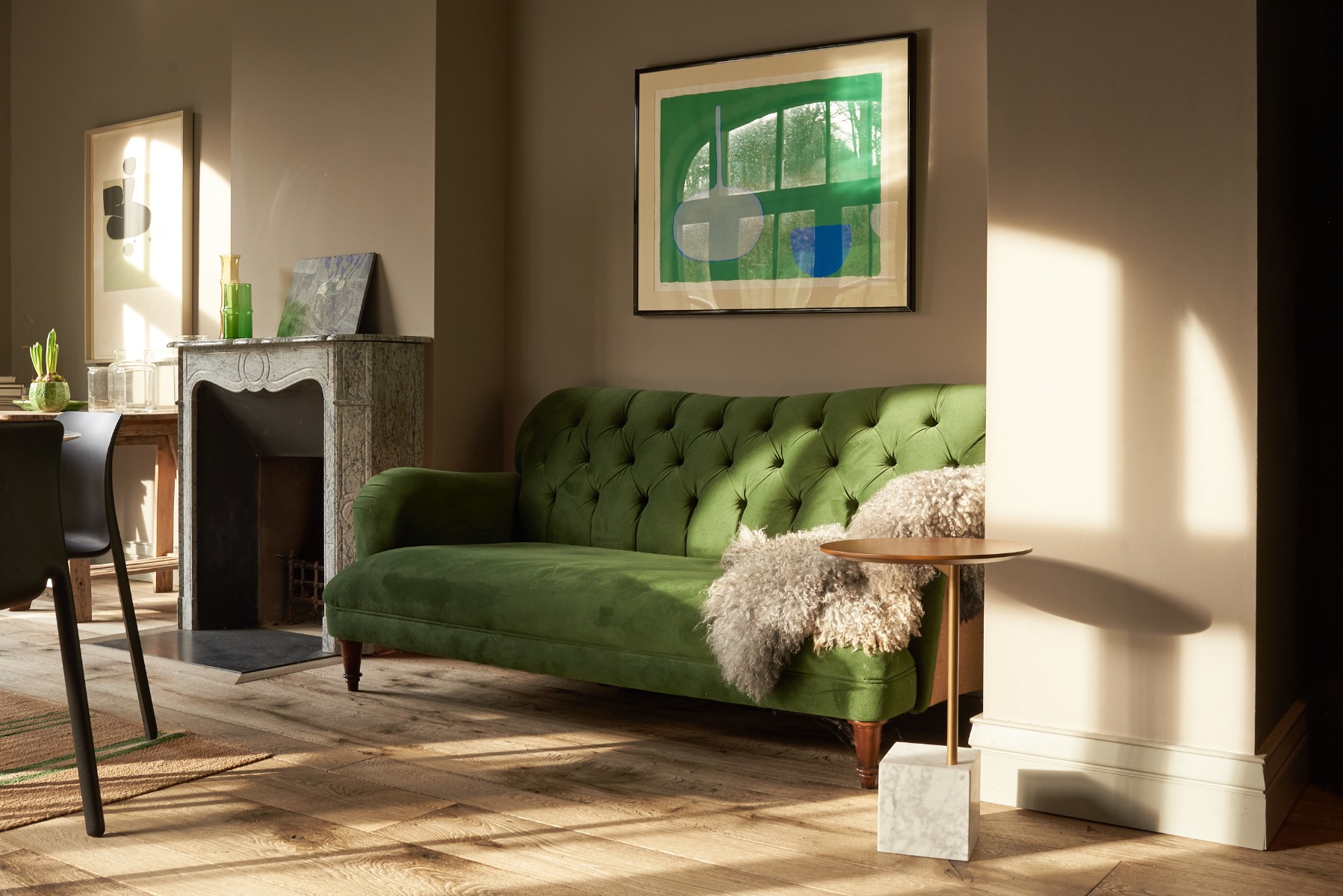
Whatever you do, don’t be tempted to take out the one thing that drew you in. We loved the uneven worn terracotta floor that greeted us when we first opened the door and as we could easily have ripped it out as we began to replace the adjoining floors, but it’s a thing of beauty, the patina, the colour, and enhances the new floors and it deserved to stay.
Be unashamed of indulging yourself with the things that you always envisaged as forming part of your new rural life. An enormous log basket, cupboards lined with Kilner jars, colours that never looked right before that you have been dying to use, the patterned wallpaper that looked too decorative, because if you have brought with you some of your urban taste you won’t be a cliché, you will have the best of both worlds which was the reason for the move in the first place.
If we had one day to spend in your neighbourhood, what should we do?
We never get tired of being outside, in a place where you can walk in any direction in a beautiful landscape, but the other great joy is tackling the practicalities in life without an epic journey, and in Tisbury 5 minutes away we can shop at a traditional butcher whose produce comes from a small radius, but the thing I love about it is that It sells surplus fruit and vegetables from its customers when they have a glut, so you never know what might turn up.
A fishmonger whose fish comes up daily from Devon and Cornwall, where you find a humble sardine and sushi-grade tuna, and the ultimate fish pie in the form of a ready meal.
We are addicted to our latest addition, Provenance who are the ultimate field to fork experience wrapped up in a ready meal, who will only use local, in-season produce, and who have found the ultimate way to use the watercress that grows a few miles away in their version of salsa verde.
Practicalities aside we often stay local and visit Messums a restored 13th-century monastic barn that is home to an art centre. The building alone is a reason to visit, but their permanent collection of sculptures that sits on its grounds and the studio of Elizabeth Frink that they rescued is something that we never get tired of.
The Pythouse kitchen garden is a favourite for lunch. It’s a beautiful walled garden once part of a large country house, with the sort of greenhouse that you’d love to own, serving food grown in the garden and where you can pick flowers literally by the bucket.
